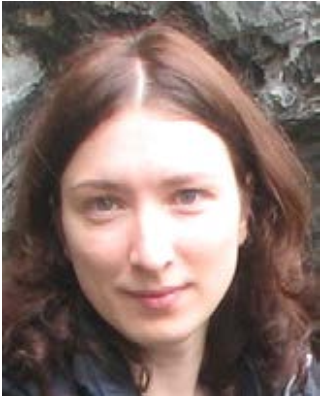Full Waveform Inversion of Fiber Optic VSP Data from Deviated Wells
Downtown Houston
Speaker:
Seminar Date: Mar 14 2023
Registration Opens: Jan 27 2023 - Mar 14 2023
Time: 11:30 AM - 01:00 PM (US CDT)
Admission/Registration Link: None
Meeting/Webinar Link: None
Contact: Artur Posenato Garcia (VP Downtown, SPWLA Houston Chapter)
Corresponding: vpdowntown@spwla-houston.org
Fees:For Student: $30
For Member: $30
For Non-member: $30
NOTES:
Speaker: Olga Podgornova (SLB)
Location: Chevron building
1500 Louisiana St
Houston – TX - 77002
40th floor – Room 40024
Parking: Hyatt Regency Garage
611 Clay St.
Houston, TX 77002

ABSTRACT:
Distributed acoustic sensing (DAS) technology permits measuring the strain or strain rate along a fiber deployed in a well due to seismic wave propagation. In vertical seismic profiling (VSP) acquisitions where seismic waves are excited at the surface and measured by subsurface receivers in the well, the DAS serves as a fast alternative to a conventional geophone array. Like conventional multicomponent VSP velocity measurements, DAS VSP data contain information about the subsurface properties that are encoded in seismic events and attributes such as compressional and shear direct arrivals, reflections, converted modes, multiples, and amplitude and phase variations. These seismic data can be used to obtain elastic properties of the formation and characterize the reservoir. Full-waveform inversion (FWI) extracts the elastic properties of the formation from the seismic wavefield by minimizing the misfit between real measurements and synthetically modeled wavefields. The synthetically generated wavefields are obtained by solving partial differential equations that accurately model the physical phenomena of the real waveforms. For conventional geophone sensors, FWI is formulated for the particle velocity field. In this paper, we present a formulation of the modeling and inversion specifically for DAS measurements as an averaged strain along the fiber. The algorithm does not require converting the data to velocities. The gradient of the misfit function, by adjoint formulation, is a cross correlation in time of the forward propagated wavefield and backward-propagated residuals injected from the receivers. For conventional sensors, the residuals are injected as force terms but for DAS data, the residuals are averaged in space first and then injected as moment tensor sources with the radiation patterns determined by the well deviation. For multi-offset in-plane and outof-plane VSP acquisitions, a 2D algorithm has been developed which inverts for a 2D distribution of elastic medium properties and includes 3D well deviation effects. This paper will present the results of applying the inversion to real multioffset, highly out-of-plane VSP fiber data acquired in a deviated well. Simulations confirm that the well trajectory has considerable impact on the data amplitude and must be included in the modeling and inversion to reproduce amplitude variations. The inverted compressional and shear velocities agree well with the reference model based on sonic data. Another real data example is a multi-offset walk-above acquisition where a targeted domain is located below a deviated portion of the well. The inversion matches reflections and produces an image in the target area.
BIOGRAPHY:
Olga Podgornova is a research scientist at the Schlumberger-Doll Research Center in Cambridge, Massachusetts, USA. She graduated from Novosibirsk State University in Russia and received her PhD in Keldysh Institute of Applied Mathematics in Moscow. She joined Schlumberger Research in Moscow in 2009 and moved to the Schlumberger-Doll Research Center in 2014. She works on numerical modeling and inversion for wave propagation problem in seismic and borehole acoustic.
